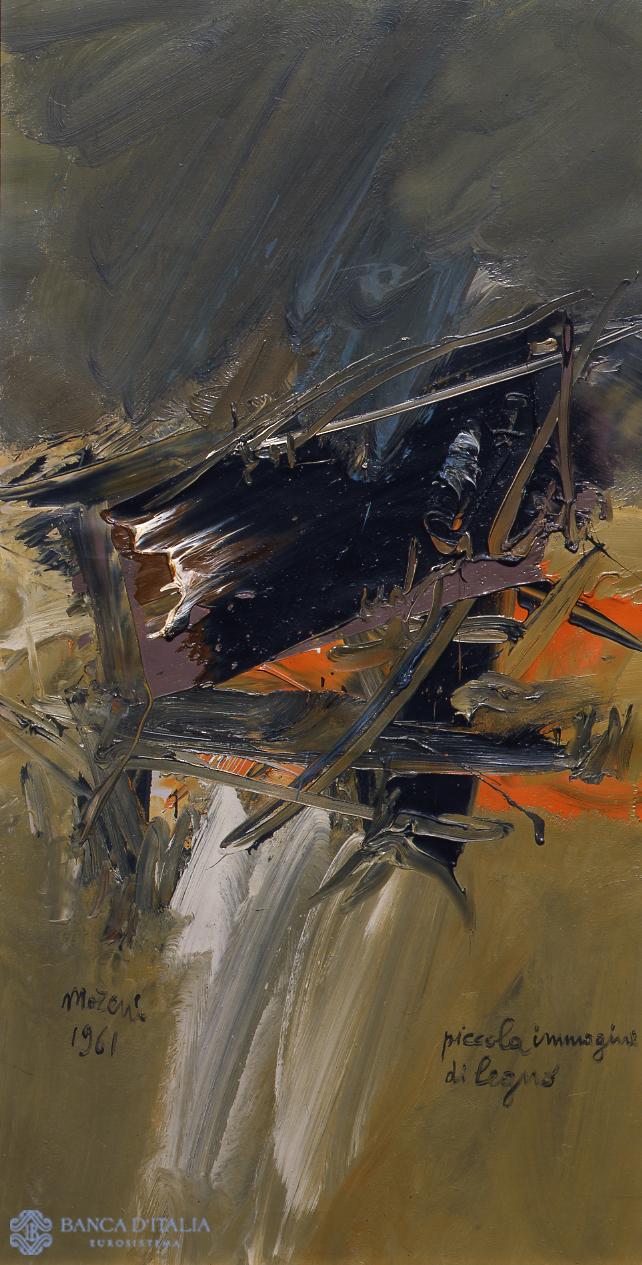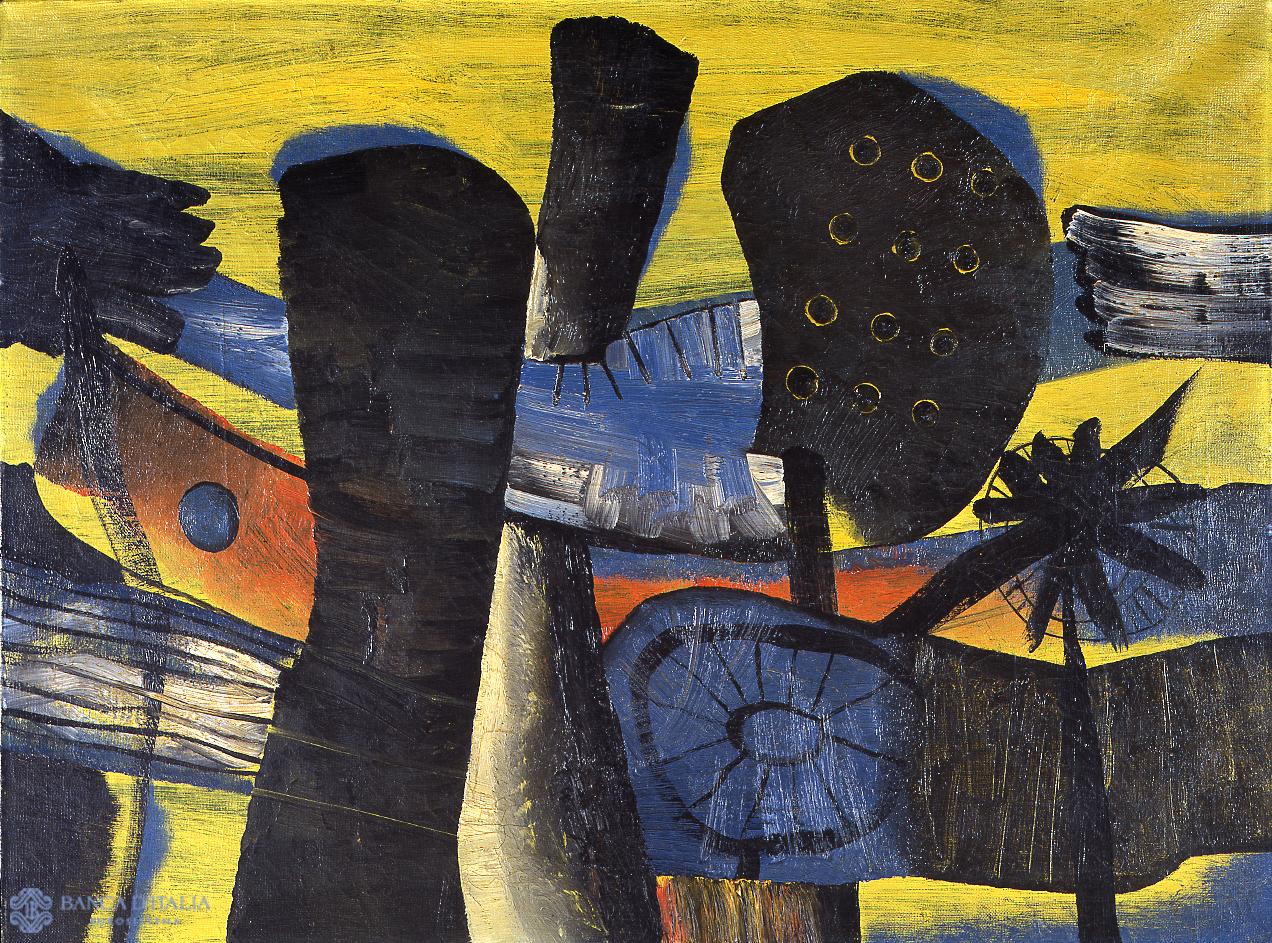Mattia Moreni was born in Pavia in 1920. As an adolescent and a young man he travelled frequently together with his father (a cavalry officer) and his family. As a member of the Communist Party, he was active in the Resistance. After the war he settled in Turin, where he held his first one-man show in 1946. In 1948 he exhibited at the Biennale in Venice and was a regular presence there through 1956, when he was given a room to himself (again in 1960 and 1972 he would be allotted such space).
As the 1940s drew to a close, Moreni’s art was neo-concrete, akin to that of Alberto Magnelli and Atanasio Soldati. He then moved towards the abstract-concrete theorized by Lionello Venturi, but always retaining his personal, quasi-expressionist, impetus, with an inclination towards agitated, violent gestural art. He nevertheless joined the Group of Eight (he was the youngest of them), with whom he exhibited at the Biennale and on some occasions in other European countries. When the Group disbanded in 1954, he drew near to the “last naturalism” of Francesco Arcangeli – a northern Italian Informalist art to which Moreni again brought his own original contribution, his lacerated expressive charge.
In the early 1960s came a series of paintings, now marked anew by an embryonic trace of figure, of wood, country signs, signals, watermelons: paintings with great autonomous force and identity in the Italian art milieu. Moreni exhibited more frequently abroad, in Europe and America. In his later years he moved towards a sort of surrealism veined with primitivism and barbarism, practically retracing, backwards, the story of the French informel school, up to the early works of Dubuffet.
Mattia Moreni died in Brisighella in 1999.
Mattia Moreni
Mattia Moreni (Pavia 1920 - Brisighella 1999)
20th century AD



